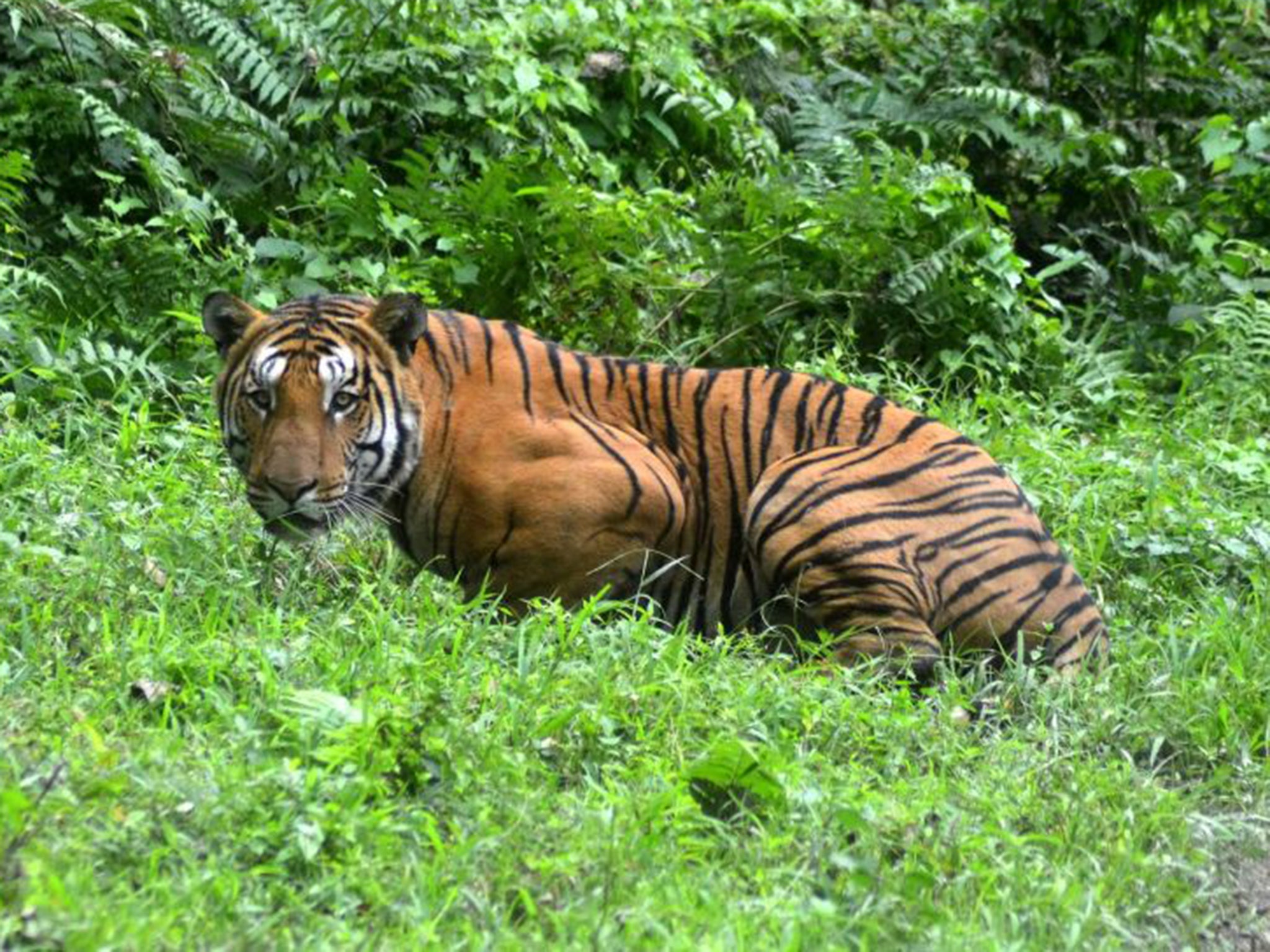Indian tiger triumph may be based on shoddy science, study says
Data released in January suggested India was home to 30 per cent more tigers than four years ago

Triumphalist reports of a revival in India’s tiger population may have been premature and the result of a measuring error, a team of leading global scientists have warned.
Data released in January suggested India was home to 30 per cent more tigers than four years ago, with numbers rising from 1,706 in 2010 to 2,226 in 2014. Now conservation experts from the University of Oxford, the Indian Statistical Institute and the Wildlife Conservation Society have cast doubt on the assertion, suggesting the statistics were the result of a flawed method commonly used in censuses of tigers and other rare wildlife.
The issue is the “index-calibration” model, a technique to measure animal numbers when they can’t all be seen. It uses firm data such as from camera-traps and radio-collars which are set against less reliable indicators of numbers, such as paw prints, to extrapolate a total figure
But under intense mathematical testing, the scientists found the method lost efficiency and the power to predict. Worse, under several tests, the index-calibration model was shown to be unreliable, with any high degree of success shown to be “down to chance”.
Professor David Macdonald, a co-author and founding director of the Wildlife Conservation Research Unit at Oxford University’s Department of Zoology, said the discovery would dramatically change how scientists counted wildlife numbers in the future.
“Index-calibration can work well, if the correlations are tight and consistent, but often they aren’t, and many of us, myself included, for example in the context of estimating numbers of mink and water voles in the UK, have been using the technique without appreciating its risks.
“Everybody will benefit from greater accuracy when it comes to counting rare animals.”
The report, to be published this week in the journal Methods in Ecology and Evolution, is likely to come as a blow in India, which in 2005 appeared to adopt the index calibration method, ending its pugmark (footprint) technique, which few experts had faith in.
Dr Ullas Karanth, a co-author of the report and a member of India’s National Tiger Conservation Authority, said the authors did not dispute that tiger numbers rose in some areas but added: “This study exposes fundamental statistical weaknesses in the sampling, calibration and extrapolations that are at the core of methodology used by the government to estimate India’s numbers, thus undermining their reliability.”
Join our commenting forum
Join thought-provoking conversations, follow other Independent readers and see their replies
Comments
Bookmark popover
Removed from bookmarks